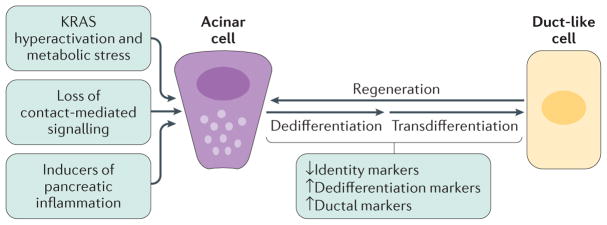Figure 1. Acinar cell plasticity and metaplasia to duct-like cells in the adult pancreas.
In response to pancreatic injury, the loss of cell–cell and cell–matrix contacts (contact-mediated signalling), loss of polarity, KRAS hyperactivity and increased inflammatory signalling can drive acinar cells to undergo dedifferentiation and transdifferentiation to a duct-like phenotype that is needed for pancreatic regeneration. Acinar-to-ductal metaplasia becomes irreversible in the presence of an oncogenic Kras mutation and persistent growth factor signalling, leading to metabolic and signalling changes that lock the duct-like cells in their transdifferentiated state and initiate further progression to low-grade precancerous lesions.

